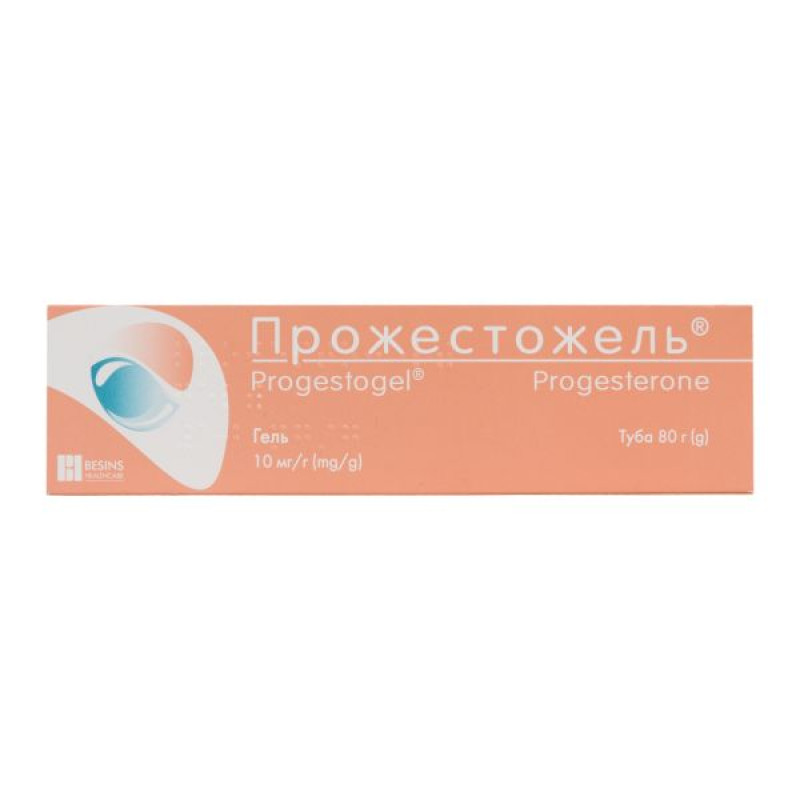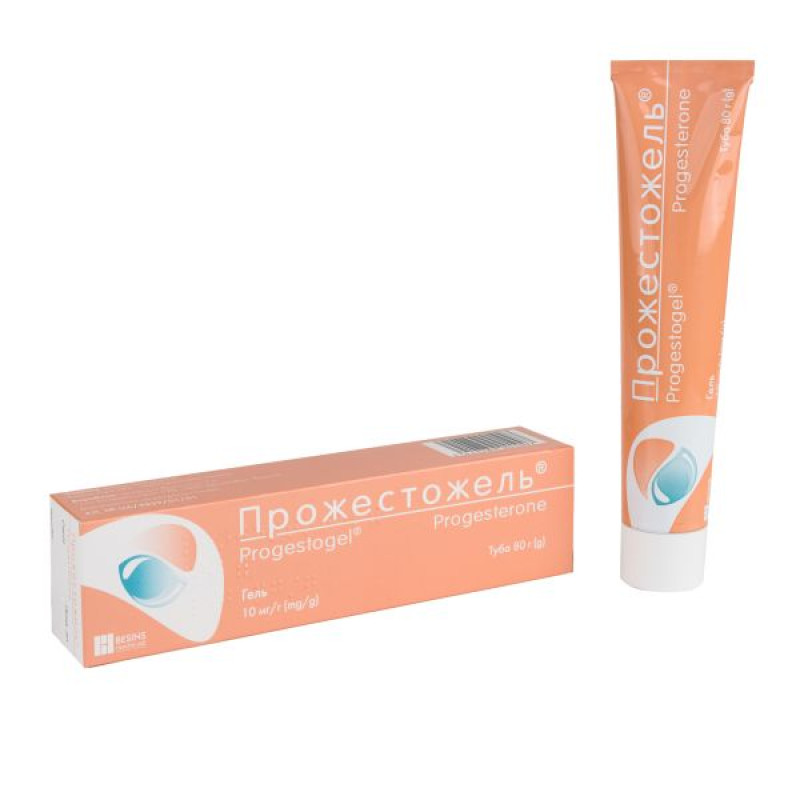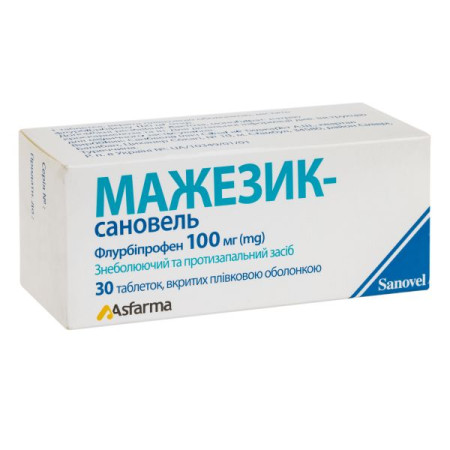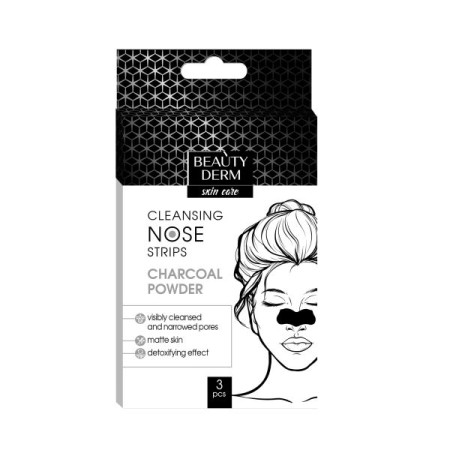Prozhestogel gel 10 mg/g tube 80 g
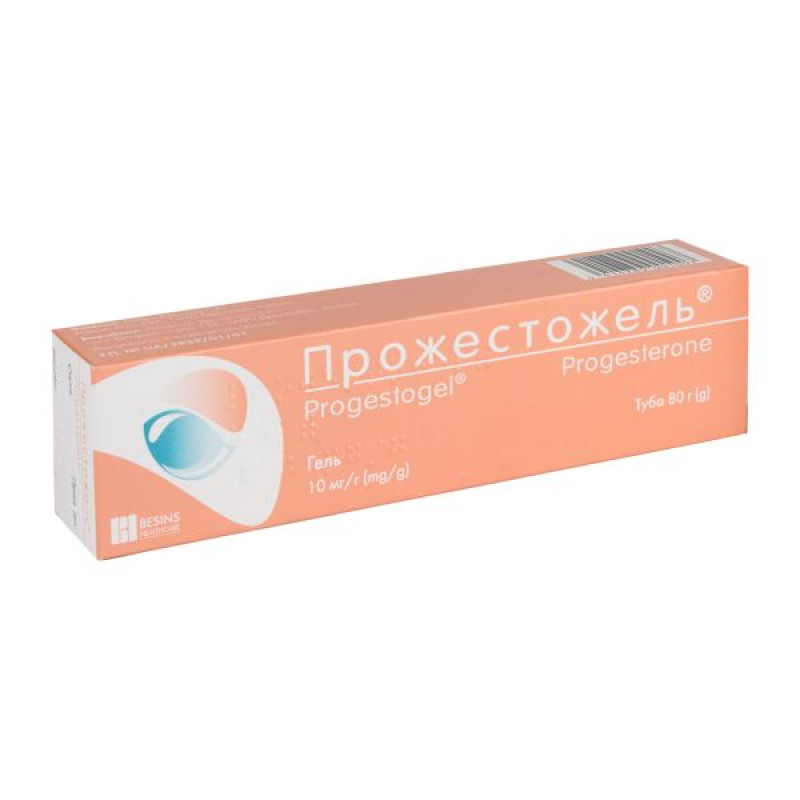
Instructions Progestogel gel 10 mg/g tube 80 g
Composition
active ingredient: progesterone;
1 g of gel contains 10 mg of progesterone;
Excipients: octyldodecanol; carbomer 980; polyethoxylated hydrogenated castor oil; triethanolamine; ethanol 96%; purified water.
Dosage form
Gel.
Main physicochemical properties: colorless, translucent, slightly opalescent gel with an alcohol odor.
Pharmacotherapeutic group
Hormones of the sex glands and drugs used in pathologies of the genital sphere. Progestogens. Derivatives of pregnenol. ATX code G03D A04.
Pharmacological properties
Pharmacodynamics
Pharmacological properties are due to the presence of progesterone, which is one of the natural hormones of the human body. In breast tissues, progesterone reduces capillary permeability, which increases due to the action of estrogens. Progesterone is involved in the regulation of growth and differentiation of mammary ducts and lobes, blocks the estrogen-induced rapid mitosis cycle of epithelial cells. Progestogel is used to treat benign breast diseases that develop due to absolute or relative local progesterone deficiency.
Local application of progesterone significantly increases the activity of 17β-hydroxysteroid dehydrogenase in the mammary gland; this enzyme stimulates the local conversion of estradiol to estrone and contributes to a decrease in estrogen activity in target tissues.
As a result of blocking estrogen receptors, fluid absorption from tissues improves and compression of the milk ducts is reduced.
The thermogenic effect is almost absent due to a different metabolic pathway of progesterone; transdermally administered progesterone is converted to alpha-reduced derivatives, in contrast to orally administered progesterone, which is metabolized to thermogenic beta-reduced derivatives.
By inhibiting tubular reabsorption of sodium ions and increasing cellular filtration, progesterone prevents fluid retention during secretory transformations of the glandular component of the mammary glands and, as a result, the development of pain syndrome (mastalgia or mastodynia).
In addition, the action of progesterone is associated with blocking prolactin receptors in breast tissue, which leads to a decrease in lactopoiesis.
The transdermal method of progesterone administration also allows you to influence the condition of the glandular epithelium and vascular network, as a result of which capillary permeability decreases, and therefore, the degree of swelling of the mammary gland tissues and the associated symptoms of mastalgia decreases.
Pharmacokinetics
Absorption of progesterone through the skin is approximately 10% of the applied dose, which results in high drug concentrations (10 times higher than the concentration in the systemic circulation) in breast tissue without entering the systemic circulation in quantities capable of causing systemic effects, especially on the uterus.
A study of serum concentrations of prolactin, estradiol, and progesterone during treatment with Progestogel showed that one hour after application of the drug, when its maximum absorption into the tissues is observed, the hormone levels practically do not change.
When used transdermally, progesterone reaches the mammary gland tissues without being destroyed in the liver and without having an adverse systemic effect on the body.
Secondary metabolism of the drug occurs in the liver with the formation of conjugates with glucuronic and sulfuric acids. The CYP2C19 isoenzyme also participates in the metabolism. The drug is excreted by the kidneys - 50-60%, with bile - more than 10%. The amount of metabolites excreted by the kidneys varies depending on the phase of the corpus luteum.
Indication
Benign breast diseases:
essential mastodynia; mastodynia associated with benign breast disease (complex treatment of benign mastopathy on the background of progesterone deficiency).
Progestogel is not indicated for use in men.
Contraindication
Hypersensitivity to any of the components of the drug.
Breast cancer.
Nodular forms of fibrocystic mastopathy.
Tumors (tumor-like formations) of the breast of unclear etiology.
Genital cancer (as monotherapy).
Interaction with other medicinal products and other types of interactions
The effect of the drug may be enhanced when used with combined hormonal contraceptives.
Interaction studies have not been conducted.
According to the information available at this time, no interactions with other drugs have been observed.
Application features
Do not exceed the recommended dose.
The mammary glands and hands should be completely clean during application. In case of menstrual disorders, concomitant use with oral progesterone or progestin may be recommended.
This medicine is for external use only - it should not be swallowed.
This medicine is NOT a CONTRACEPTIVE.
If the skin barrier function is impaired, there is a risk of progesterone entering the systemic circulation. Therefore, the use of the drug Progestogel in this case is not recommended.
The medicine contains castor oil, which may cause skin reactions.
Use with caution in the following conditions: hepatic failure, renal failure, bronchial asthma, epilepsy, migraine, depression, hyperlipoproteinemia, ectopic pregnancy, abortion, tendency to thrombosis, acute forms of phlebitis or thromboembolic diseases, vaginal bleeding of unclear etiology, porphyria, arterial hypertension, diabetes mellitus.
Avoid exposure to direct sunlight after applying the gel.
Ability to influence reaction speed when driving vehicles or other mechanisms
Missing data.
Use during pregnancy or breastfeeding
Progestogel is not indicated for use during pregnancy. There is insufficient experience with the use of Progestogel during pregnancy. However, no negative effects of progesterone on the fetus have been described.
Progestogel is not indicated for use during breastfeeding. Progesterone may be partially excreted in breast milk. However, no negative effects on the child have been described.
Method of administration and doses
For transdermal use.
Therapy for a month, including menstruation days, should be continuous with daily use of the drug.
The course of treatment is determined by the doctor, usually the average duration of treatment is from 3 to 6 months.
The maximum daily dose is 5 g.
Method of application
Press the bottom of the tube and place the dose of medication into the groove of the dosing spatula.
Apply one or two doses (2.5 g each) of gel to clean, dry skin of each breast using a spatula. Gently rub until the medicine is completely absorbed into the skin.
Children
The drug is not used in pediatric practice.
Overdose
There are no reports of overdose.
Due to the method of administration, overdose is unlikely.
Menstruation may begin one or two days earlier - in this case, the drug can be used from the 10th to the 25th day of the cycle. The normal duration of the cycle will be restored immediately after discontinuation of treatment.
Adverse reactions
Isolated cases of hypersensitivity or non-specific skin irritation have been reported.
In some cases, menstruation may begin one or two days earlier, without any change in the usual monthly volume of discharge. A weak secretory LH-mimetic activity has been established, which has no common features with the effects of systemic administration of a similar dose of progesterone.
When used as recommended, progesterone is unlikely to enter the systemic circulation. However, if the skin barrier function is compromised, there is a risk of systemic adverse reactions, including menstrual irregularities, amenorrhea, breakthrough bleeding, and headache.
Very rare - breast tenderness, hot flashes, metrorrhagia, decreased libido, hypersensitivity reactions, including erythema at the site of gel application, swelling of the lips and neck, fever, headache, nausea.
Reporting of suspected adverse reactions
After a medicinal product has been authorised, it is important to collect reports of suspected adverse reactions. This allows monitoring of the benefit/risk balance of the medicinal product. Healthcare professionals should report suspected adverse reactions through the national pharmacovigilance system.
Expiration date
3 years.
Storage conditions
Store at a temperature not exceeding 25 °C out of the reach of children.
Packaging
80 g in a tube, 1 tube complete with a spatula-dispenser in a cardboard pack.
Vacation category
According to the recipe.
Producer
Delpharm Drogenbos SA.
Location of the manufacturer and its business address
Grote-Bigardenstraat 128, 1620 Drogenbos, Belgium.
There are no reviews for this product.
There are no reviews for this product, be the first to leave your review.
No questions about this product, be the first and ask your question.







